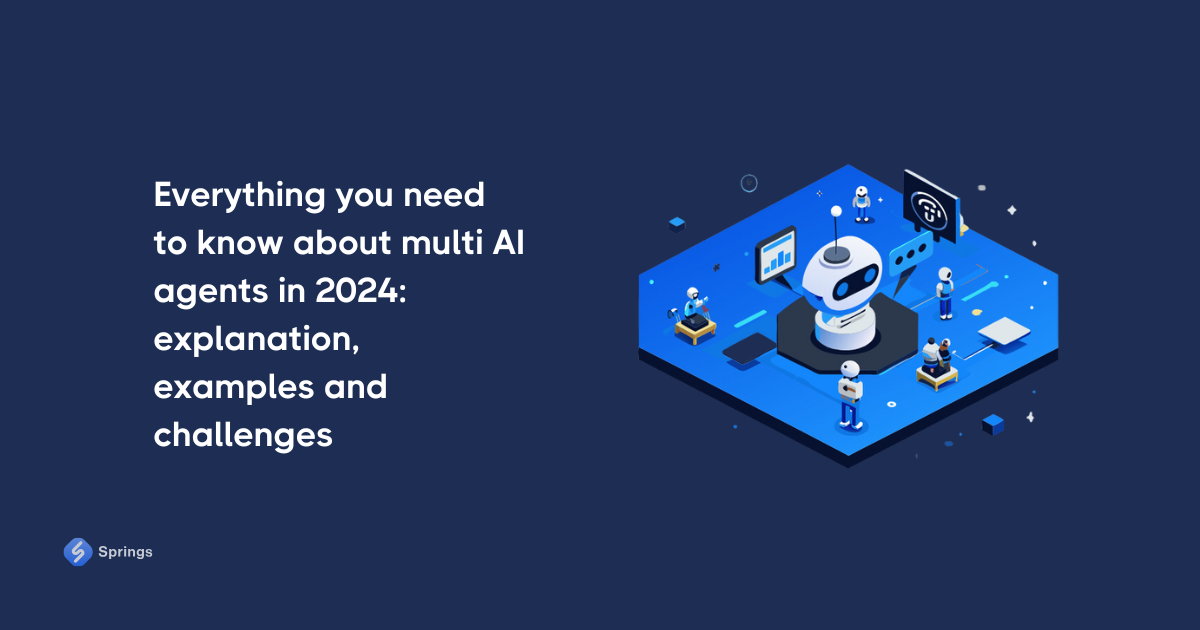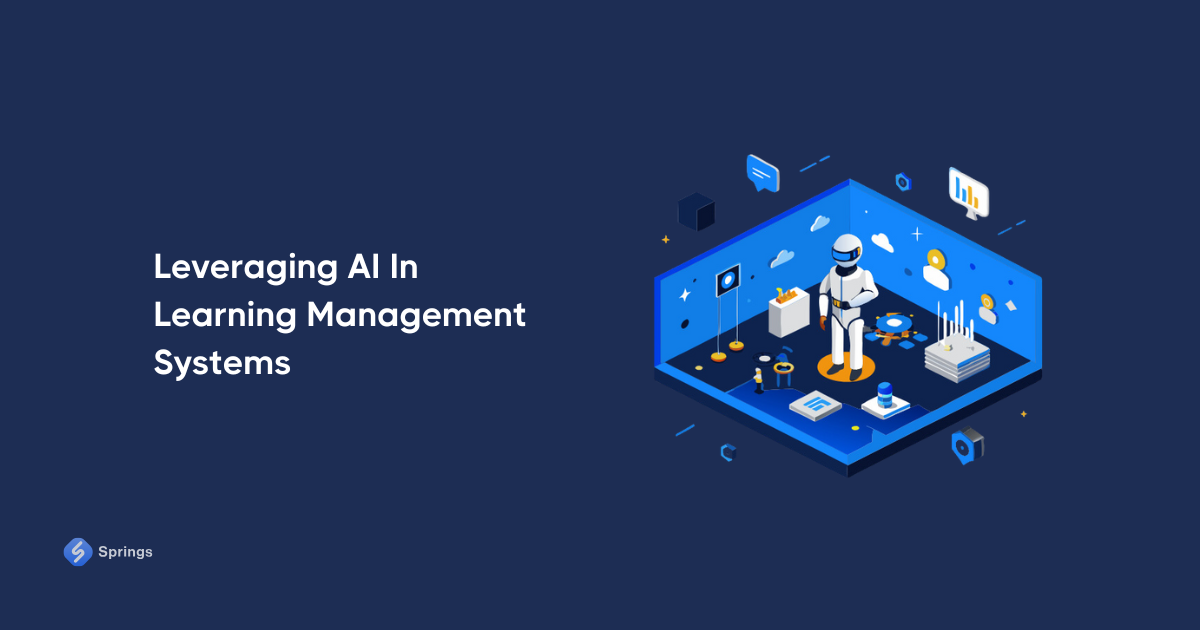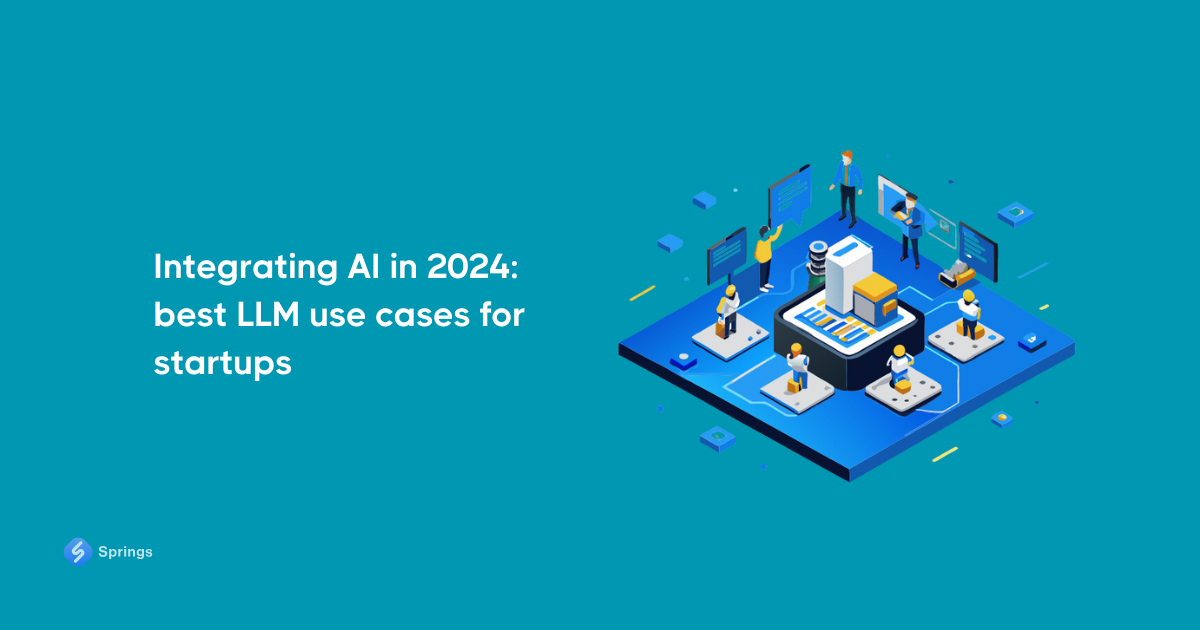Conversational AI For Customer Service: Crucial Steps and Best Advice
Great customer relations are the bedrock of a successful business. Clients must be able to resolve their issues without spending an eternity dealing with multiple support agents. Recently, businesses discovered a new way of improving this process and saving funds thanks to the introduction of conversational AI products.
Currently, 63% of all retail companies use artificial intelligence to offer better customer service. Of course, not all of them can build such solutions themselves. Enterprises can struggle with having an entire customer center or providing this service via a small group of experts.
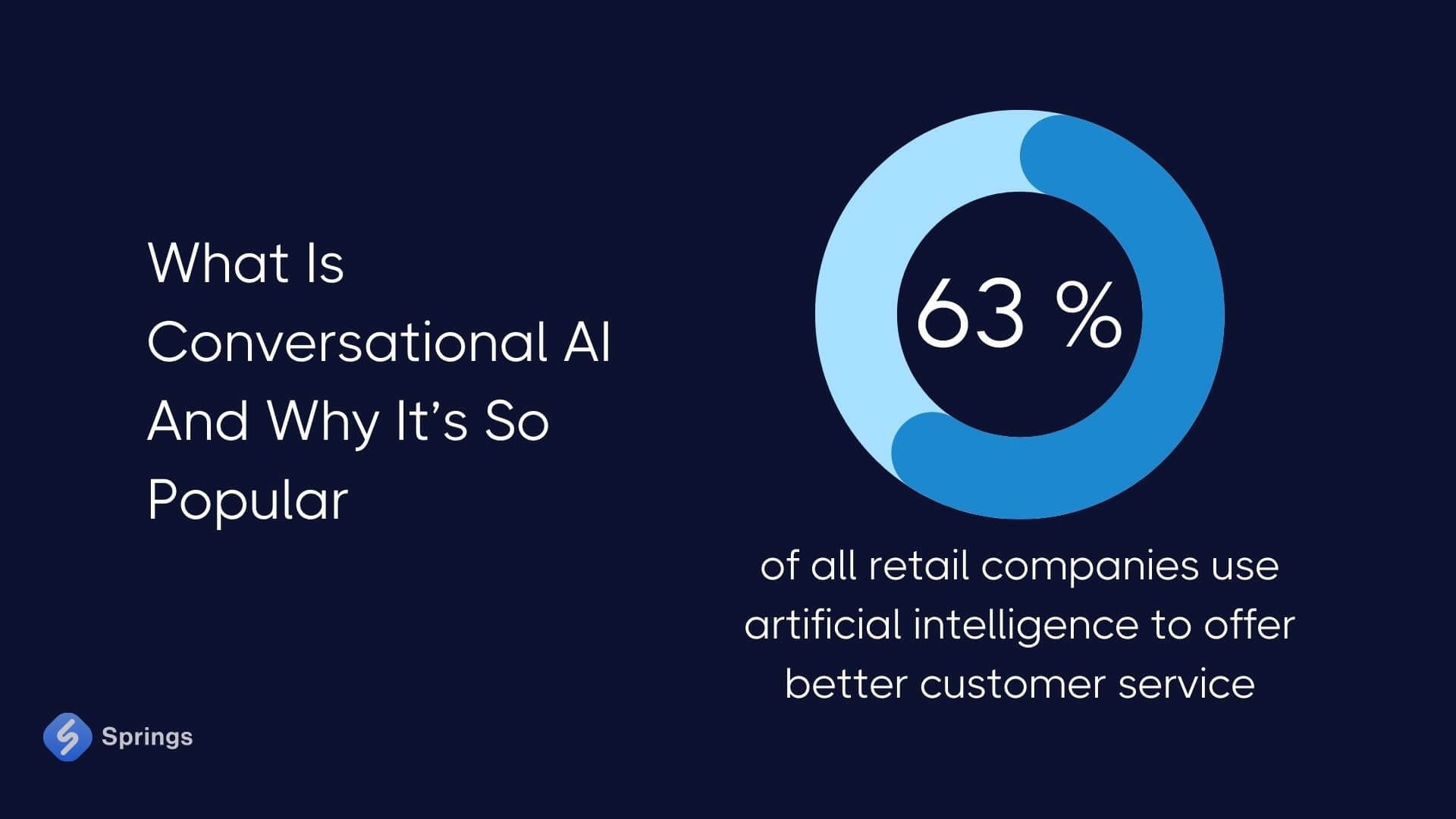
Our guide will dive deep into the nature of conversational AI that contact centers can adopt to streamline their operations. This article will also explain the advantages of working with such products, their main applications, and the implementation steps. Our team will provide some of the best tips on what to look for in a solution provider, the main mistakes associated with AI adoption, and how to deal with them.
What Is Conversational AI And Why It’s So Popular
This technology can be found anywhere, from online shops to car dealerships. It lets people engage with programs and ask them to provide information or perform different tasks. Most tools that use conversational AI, like chatbot live chat products and virtual assistants, use text input to work. However, more advanced solutions support voice-enabled communications.
As its name suggests, conversational tools help organizations talk to customers without having to hire and train additional employees. These products can handle all but the most complex requests that still require a human touch. They use two types of AI tech to work: natural language processing (NLP) and machine learning (ML).
The first helps software solutions intake user input, comprehend it, and provide a response. The second ensures that these products continuously learn with each interaction. The more AI-based tools talk to users, the better they understand the nuances of a person’s emotional state and their issues. All of this happens with programmer interference.
Benefits Of Using Сonversational AI For Customer Experience
The technologies behind these solutions are still in the process of developing. This ongoing improvement and introduction of chatbots in IT support and other forms of customer relations processes bring several advantages to companies.
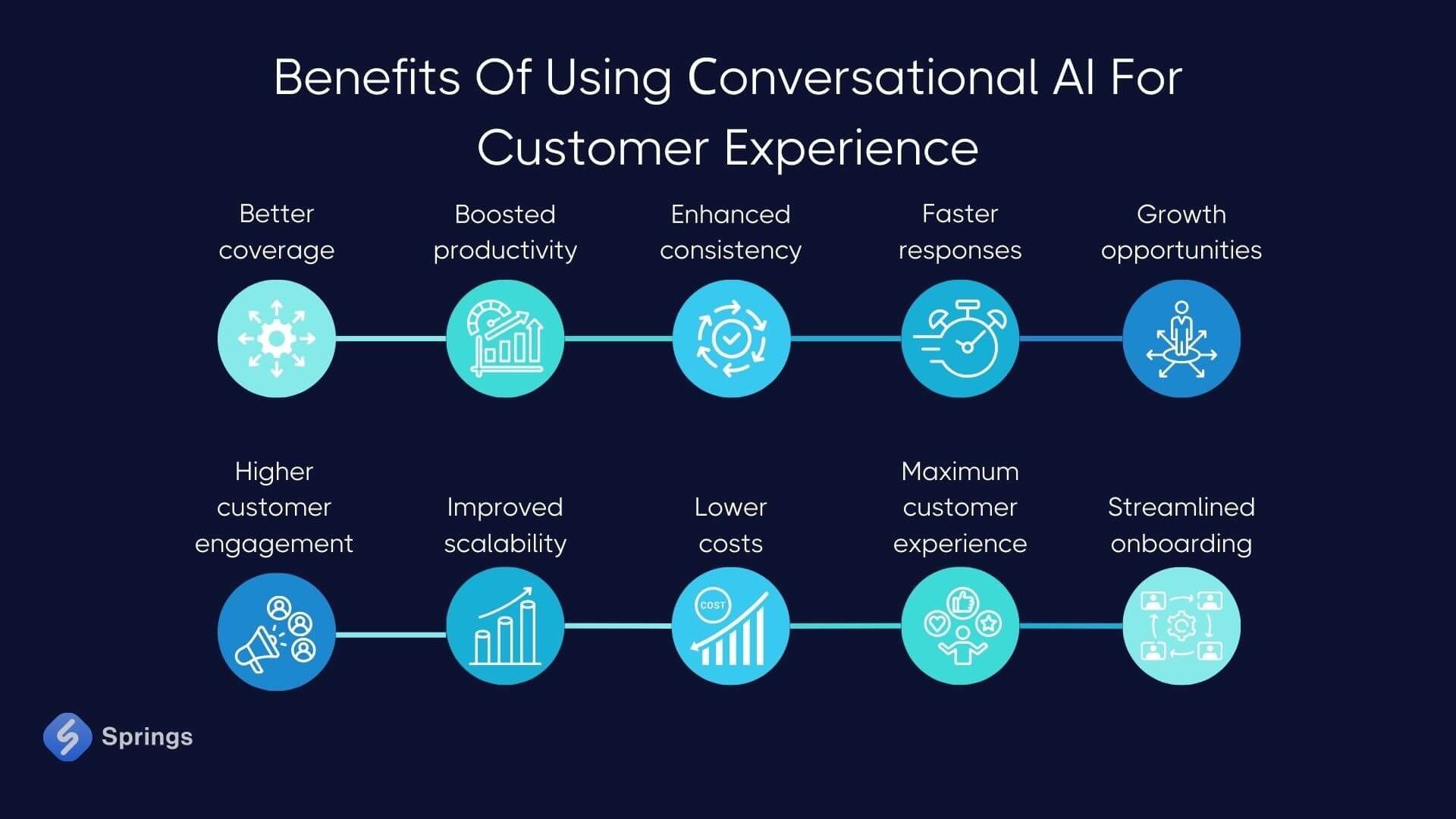
- Better coverage. Conversational AI tools offer support services outside regular hours. Their ability to handle customer requests at their convenience is especially handy for businesses working in multiple time zones.
- Boosted productivity. Companies that adopt AI for customer needs claim that this practice saves agents a lot of time and work. While chatbots and virtual assistants handle mundane tasks, experts have more time to solve complex issues.
- Enhanced consistency. Introducing these products to the customer support system turns them into an artificial intelligence call center, offering a consistent quality of service across all platforms, such as mobile, web, and messengers.
- Faster responses. With the help of conversational artificial intelligence, customers get almost instant responses. This leads to faster responses and issue resolutions.
- Growth opportunities. AI-based tools create additional room for support experts and the business itself to improve themselves. While the solutions handle most of the requests, enterprises work on enhancing other business areas.
- Higher customer engagement. Using conversational AI in this setting allows companies to talk to clients on a personal level. It handles feedback requests and item recommendations, making people more engaged.
- Improved scalability. Using AI-based conversational solutions helps businesses process multiple client requests without breaking a sweat. Software engineers update them to grow seamlessly alongside the company.
- Lower costs. AI tools built for customer relations reduce the funds required to maintain a support team. With their help, enterprises retain the same level of quality without hiring additional specialists.
- Maximum customer experience. Relying on AI in this field allows enterprises to provide timely and accurate support. Solutions built on this technology provide high-quality service for more straightforward requests, making the job of specialists easier.
- Streamlined onboarding. Aspiring customer support experts can use AI tools to draft responses using an internal knowledge base during their training. This approach lets them become more confident and complete requests faster.
Which Tasks Can Conversational AI For Customer Service Handle?
The use of this technology doesn’t boil down to offering a chatbot live chat product in an app or on a website. Conversational AI helps enterprise clients with several tasks more efficiently, leading to better satisfaction and retention rates. Here are the top use cases for this products businesses of all sizes and industries can benefit from:
- Account management. Using conversational AI for customer experience allows companies to manage client accounts more effectively. These solutions help with different account-related procedures. These include creation, password resets, update, linking, and deactivation.
- Booking assistance. Conversational products can assist with bookings and reservation-making. With their help, people spend less time finding hotel, restaurant, and flight options. These tools can guide clients through the entire process and offer confirmation details.
- Customer authentication. Solutions based on AI technology streamline the customer authentication process. They help identify clients through security questions only account holders can answer. This approach safeguards sensitive data and helps maintain customer interactions secure.
- FAQ service. Enterprises use these tools to answer common requests more efficiently and quickly. This provides accurate and consistent responses and frees up human support agents.
- Intent detection. These tools also excel at understanding the main goal or purpose of customer requests. Accurately identifying intent allows conversational AI contact center products to provide the most relevant information and guide users to more favorable outcomes.
- Order tracking. Customer service teams can utilize artificial intelligence to update customers on the status of their orders. These tools provide location information, estimated delivery dates, and possible delays. They also send proactive notifications regarding any changes in their order status.
- Payment management. Conversational AI tools often assist customers with different payment options. They help set up automatic payments, change payment methods, and resolve billing-related issues. These solutions also guide users in making payments or resolving any discrepancies.
Steps Of Implementing Conversational AI For Customer Service
When it comes to the process of AI integration, enterprises need help to pull it off. So, in most cases, software engineers from developer companies must take over. We’ve decided to talk about the different stages of this process to make companies better understand how it works.
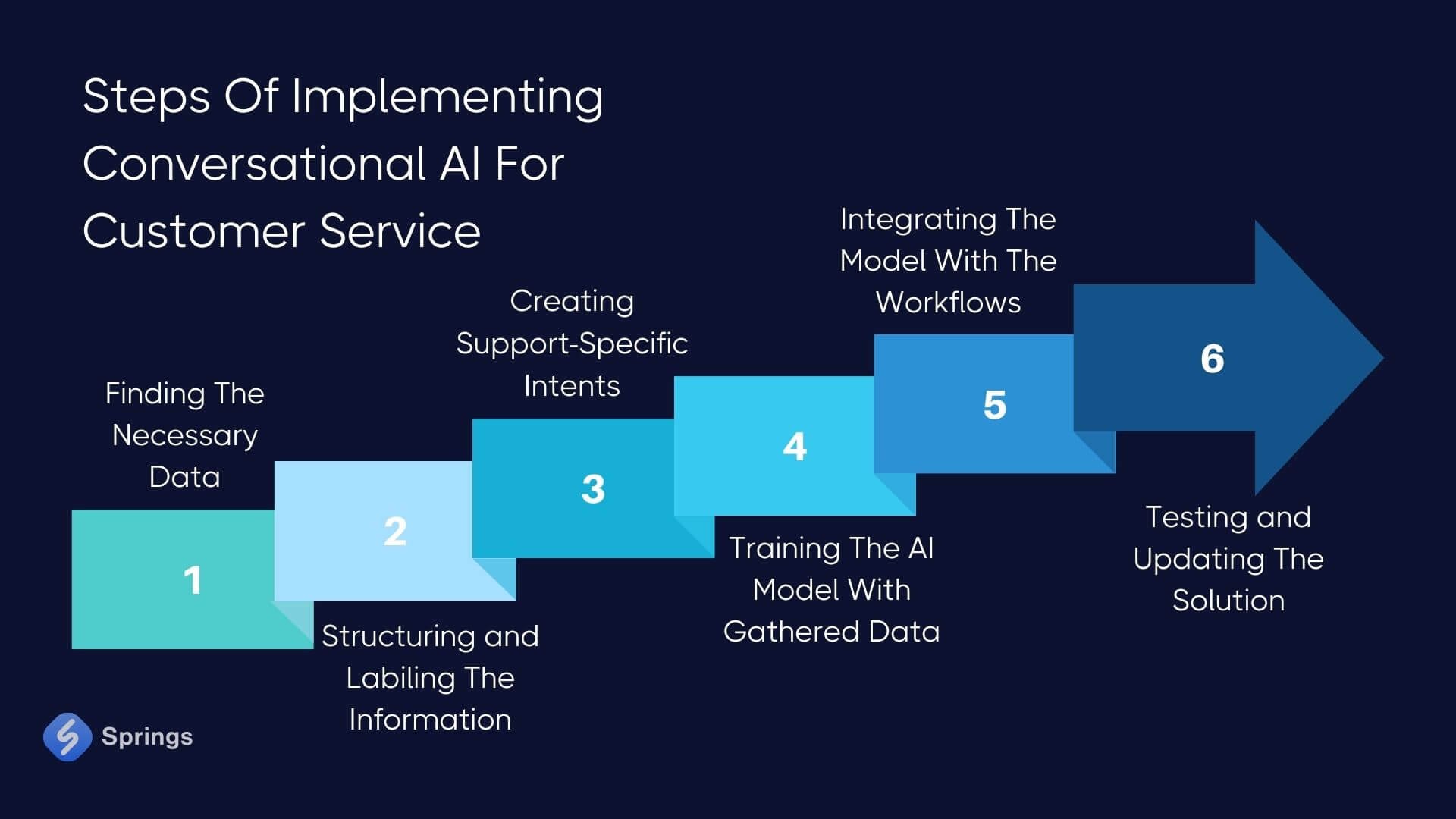
Finding The Necessary Data
Conversational tools require a lot of accurate information to work correctly. This data comes from texts, numbers, images, and videos. Business-specific solutions need access to previous conversations, transactions, and feedback. It’s the job of data scientists to find this information and prepare it for use by an AI LLM.
The data comes in three types: structured, unstructured, and semi-structured. The first comes from documents such as analytics and customer satisfaction scores, allowing conversational tools to make better decisions. Unstructured information comes from open-ended responses. Finally, the semi-structured type can be found among CRM messages.
Structuring and Labiling The Information
Next, the developers must clear and structure data using special tools. The information used in a conversational AI contact center product must be labeled based on relevant categories, such as product names, purchase history, and demographics. Proper introduction of AI assistants and their accurate training require high-quality data and a lack of inconsistencies.
Creating Support-Specific Intents
Creating support-based intents in AI for customer service is a delicate process. It requires detailed query analysis to identify recurring issues and common themes. Developers must build specific intents for main topics that are aligned with the customer journey.
Training The AI Model With Gathered Data
Next, programmers train the model with structured information. First, they concentrate on engineering features and identifying the relevant features within datasets. These must align with the required outcomes in customer service. Second, developers divide the dataset into validation and training sets.
The biggest portion is used for training, which helps the AI model learn the intricate relationships and patterns within the data. Third, they choose a suitable AI model architecture that responds to the nature of customer service tasks and uses a human touch to review the training process.
Integrating The Model With The Workflows
After training the AI model, engineers pair it with existing client service workflows. A data management system should ensure a seamless flow when processing and organizing user requests.
Professionals can explore solutions like live chatbots to offer prompt and accurate customer relations. They may also include decision-making automation into the service processes, making them more accurate based on AI-gathered insights.
Testing and Updating The Solution
During the final stage of the integration process and post-release, developers thoroughly test artificial intelligence call center tools from two perspectives: agents and customers. In the first case, they run usability checkups on features like question handling and data access. This process helps establish how intuitive the solution is and find any bottlenecks.
In the second instance, tests evaluate how AI tools handle conversational initiation and the clarity of their responses. During this process, experts collect feedback about the AI support tools, which helps identify bugs for further improvement.
Points To Consider About AI Integrating Conversational AI Products
The current market for conversational platforms and developers teams with competing providers. There are several tips enterprises can use to successfully introduce chatbots for IT support or other types of tools.
Customizability
A conversational AI provider must offer products that align with particular business needs. Enterprises requiring tailored tools should avoid out-of-the-box tools and focus on custom development services. Products made by AI engineers offer a unique customer experience as they are tailored to reflect the brand identity.
Detailed Reports
Businesses require a solid way of checking the worth of integrated AI tools. This is impossible without access to usage metrics and performance reviews. Thus, providers must offer robust analytical tools to see how well people are inclined to and satisfied by using these conversational tools.
Human Support
Even a well-made conversational AI contact center product can fail to grasp the full extent of human knowledge and expertise. When this happens, switching to more knowledgeable support specialists should be possible. Such seamless transitions will lead to a frictionless experience that lets customers resolve most of their issues.
Reputation
Look for trustworthy developers to work with. Your tools should be able to answer business-specific questions without the risk of hallucinations or inappropriate responses. This ensures that the solutions won’t go off-topic during conversations or hinder the support experience in any other way.
Scalability
Products like chatbot IT support solutions must easily handle growing user numbers and be flexible enough to provide cross-platform support. For example, if a business requires a tool for multiple messenger apps, it should search for one among providers.
Main Mistakes Associated With Conversational AI Implementation
On the surface, AI integration into customer support systems seems straightforward. However, enterprises can spend much time and money without getting the desired results. Several fundamental mistakes render this process useless at different implementation stages.
Lack of Coherent Strategy
Not developing a proper development strategy is a key mistake enterprises often fall into. A good approach must focus on a single goal that addresses particular user needs. This is only possible by first analyzing their behavior. The results of this analysis will influence the type of data, application, and tone of the conversational tool.
Not Finding The Right Use Case
Selecting the wrong use case for a conversational product can prove disastrous in the long run. When this happens, the business won’t reach its business goals and interests. Conversational solutions must be fully tailored to user expectations and employee needs.
Failing To Identify The Main Goal
One of the worst things companies can do is to develop an AI tool with a clear aim in mind. They end up with solutions that don’t provide relevant information or comprehend user requests. As a result, the tools fail to meet business needs or improve the customer experience.
Breaking Conversational Rules
Another common issue occurs when conversational guidelines are broken. These standards determine the personality of conversational AI tools. If the chatbots are made to give curt and robotized responses or talk to the client base in the wrong tone, this hinders the customer experience and how they interact with the solutions.
Launching Without Appropriate Tests
A lack of comprehensive testing is one of the leading causes of failed conversational AI projects. These projects lack the appropriate scalability to grow with the enterprise. In extreme cases, this leads to malfunctioning or completely unusable projects. Worst yet, enterprises have to start the whole process to see where things went wrong.
Top Advice For Addressing Issues in Conversational AI
While working with our clients we notice many points that prevent smooth Conversational AI implementation in their businesses. This experience helps us to find the best ways to address these issues and make clients happy. Let me show you how it works based on our real experience with the customer support AI chatbot we developed - IONI.
IONI Case
During the development and integration phases of IONI, we met many issues, especially in terms of prompt engineering and fine-tuning our LLM. In our case, it was the improved version of GPT-4. We spent a couple of months fine-tuning the model to get the results of the answers our clients wanted to get as well as the UI our customers needed. These were the biggest challenges for us but we managed them because of the following steps:
- Non-Stop Customer Development. If you want to get a good result in conversational AI products - you have to talk to your customers every day and address their problems, receive feedback, and implement their feedback into your products. Remember, that your clients are the biggest value for your business, not your product.
- Ongoing Product Testing. Even if you think that your product is bugless - never stop testing it cause you will find something that doesn’t work perfectly. We have been developing AI and ML products for more than 10 years and we understand that there is no product in the world that works perfectly without ongoing testing. So, test your product day by day and try to improve it.
- Watch Your Competitors. It is great to think that your Conversational AI software is the best and unique but always remember about your competitors and the market. If you want to achieve results - stay tuned and dive deeper into your competitors’ products: their features, customers, marketing, etc.
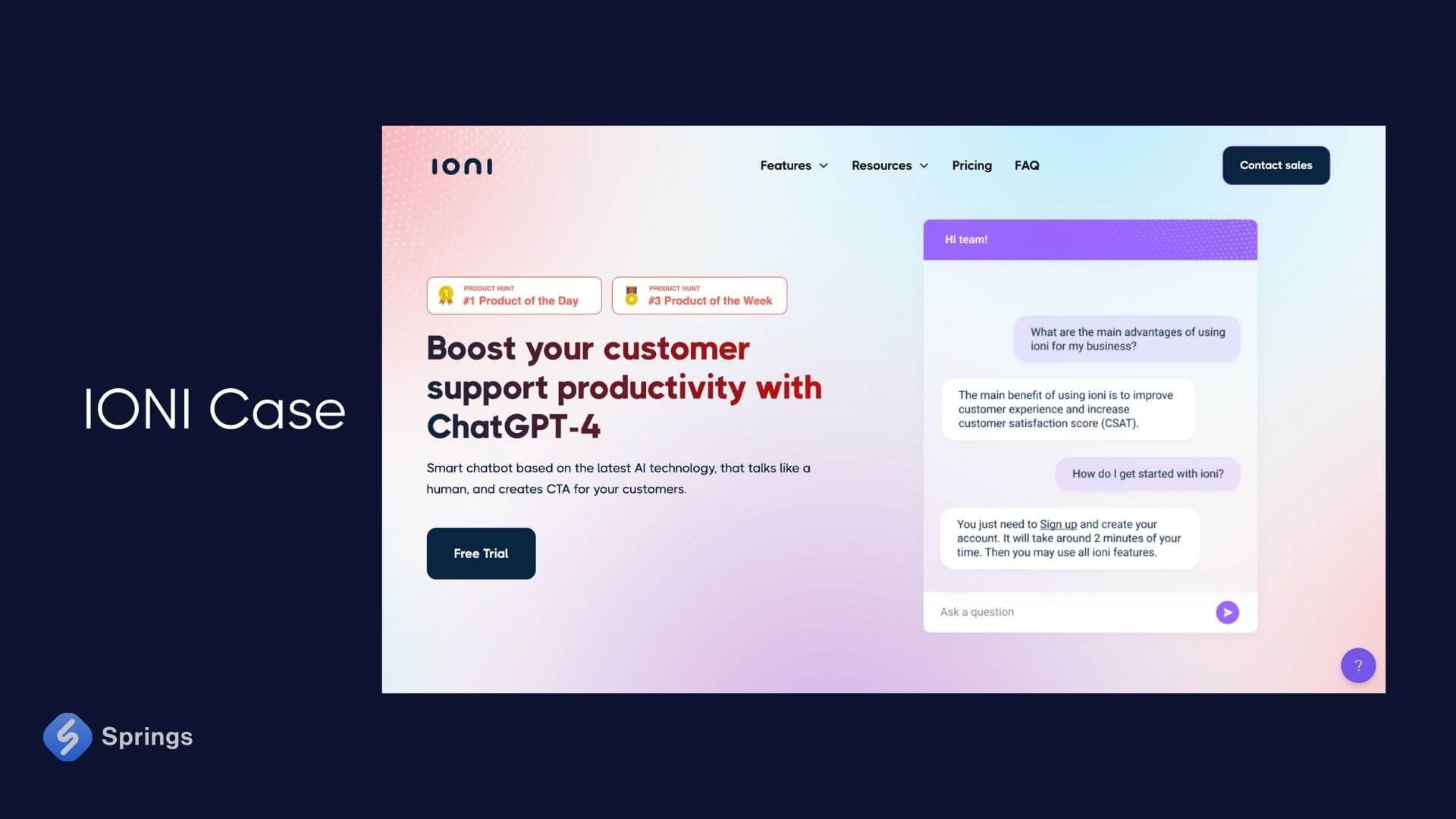
We addressed multiple issues while developing IONI and as a result, we successfully launched and were recognized as a Product of the Day on Product Hunt.
Conclusion
Utilizing conversational AI tools for customer service is a powerful decision. It allows businesses to streamline client relations on a budget while improving loyalty. Our guide will enable companies to use this process to its maximum effect.

